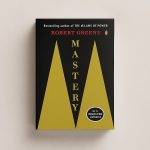Originals: How Non-Conformists Move the World by Adam Grant is a compelling blueprint for challenging the status quo and advancing bold ideas. Blending groundbreaking research with gripping narratives, Originals by Adam Grant reveals that originality is not a rare talent, but a skill that can be cultivated, refined, and deployed strategically. From entrepreneurs and activists to educators and everyday professionals, he shows how unconventional thinkers harness timing, build coalitions, and navigate resistance to create meaningful change. With practical tools, inspiring examples, and myth‑busting insights, this work empowers readers to champion their ideas, influence others effectively, and leave a lasting mark on the world.
1. Introduction to Originals by Adam Grant
Originals by Adam Grant is in‑depth exploration of how people challenge the status quo with new ideas and how such ideas take root, gain traction, and influence societies, organizations, and individuals. Where some assume originality is a rare gift bestowed on a few, Grant’s thesis dismantles that belief: originality is a skill – a blend of attitude, strategy, and persistence – that can be cultivated.
Originals by Adam Grant blends rigorous social science research with vivid case studies, spanning business, politics, culture, technology, and history. Readers encounter rebel entrepreneurs, activist leaders, prolific creatives, and everyday professionals who acted against the norm – and discover that their success often runs counter to popular myths about innovation.
Rather than framing originality as high‑risk leaps of faith, Grant shows it as a process involving cautious steps, coalition‑building, idea testing, and timing. Alongside these practical strategies, Originals addresses the psychological and social barriers that suppress unconventional thinking – and the methods to overcome them.
2. Author Biography: Adam Grant
– Full Name: Adam M. Grant
– Born: August 13, 1981, West Bloomfield, Michigan, USA
– Current Roles: Organizational psychologist, top‑rated professor at the Wharton School of the University of Pennsylvania, bestselling author, host of the WorkLife podcast.
– Academic & Professional Credentials:
– BA from Harvard College (Psychology).
– PhD in Organizational Psychology from the University of Michigan.
– Tenured at Wharton in his twenties; named one of the world’s most influential management thinkers (Thinkers50).
– Public Work: Known for research on motivation, generosity, creativity, and leadership. Consulting clients span Google, Pixar, the NBA, the Gates Foundation, and the U.S. government.
– Notable Publications: Give and Take (2013), Originals (2016), Option B (with Sheryl Sandberg, 2017), Think Again (2021), Hidden Potential (2023).
Grant writes from an unusual dual vantage point: as a respected academic and a widely sought‑after speaker/consultant, giving him both empirical rigor and access to the inside stories of high‑impact innovators.
3. Structure of the Originals by Adam Grant
The book unfolds across eight main chapters plus an “Actions for Impact” section, each focusing on a distinct ingredient in the originality process:
- Creative Destruction – Redefining the image of successful innovators.
- Blind Inventors and One‑Eyed Investors – Recognizing and championing original ideas.
- Out on a Limb – Speaking truth to power effectively.
- Fools Rush In – Timing innovation for maximum success.
- Goldilocks and the Trojan Horse – Building alliances and persuading opponents.
- Rebel with a Cause – Shaping environments that nurture originality.
- Rethinking Groupthink – Balancing strong cultures with diverse ideas.
- Rocking the Boat and Keeping It Steady – Managing personal emotions and sustaining momentum.
The Actions for Impact section distills concrete strategies for individuals, leaders, and parents to put the principles into practice.
4. Core Ideas and Insights
4.1 Dispelling the Myths of the Lone, Fearless Genius
Popular culture often presents originals as mavericks who abandon everything to bring their ideas to life. Grant’s research and stories dismantle this narrative:
– Many highly successful innovators, such as the founders of Warby Parker, keep their day jobs while developing their ventures.
– Originals are more prone to measured risk‑taking, balancing bold actions in one domain with stability in another.
– Procrastination, when strategic, can enhance creativity by allowing ideas to incubate.
4.2 How to Recognize and Cultivate Original Ideas
Great ideas often look unremarkable-or even bad-at first. Grant demonstrates:
– Peers rather than managers tend to be better judges of an idea’s potential, due to shared expertise and domain familiarity.
– Creative potential can be amplified by diversifying experiences – for example, learning in multiple fields rather than deep specialization in one.
– Successful originals often generate many ideas, increasing the odds that one will stick.
4.3 Speaking Up Without Losing Influence
Original thinkers need to communicate dissent in ways that don’t alienate potential supporters:
– Frame dissent carefully – couch criticism in the context of shared values or goals.
– Use powerless communication techniques such as asking questions rather than making blunt assertions to invite dialogue.
– Build credibility over time so challenging ideas don’t seem self‑serving or erratic.
4.4 The Importance of Timing
The book reveals that:
– Being too early can be as fatal as being too late – first movers often face unready markets, immature technology, or unprepared audiences.
– “Strategic procrastination” allows for more refined, well‑adapted ideas.
– Optimal timing involves reading environmental signals, competitor actions, and audience readiness.
4.5 Building Coalitions and Winning Support
Original ideas rarely succeed through solo heroics:
– The Goldilocks principle – tailor your communications to be neither too radical nor too conventional for the target audience.
– Trojan horse strategy – embed daring ideas in familiar frameworks to lower resistance.
– Identify “tempered radicals” within established systems to act as change agents.
4.6 Creating and Leading Cultures of Originality
Grant discusses both family and organizational settings:
– Children raised with an emphasis on moral reasoning and questioning rules tend to be more original.
– Leaders who balance vision with a tolerance for dissent create resilient, adaptive teams.
– Overly strong cultures can lead to groupthink – curbing innovation due to excessive cohesion.
4.7 Managing Emotions and Sustaining Change
Originality often invites anxiety, doubt, or burnout:
– Doubt can be reframed as a signal to improve an idea – not as a reason to abandon it.
– Passion is vital, but pairing it with discipline ensures execution matches the vision.
– Anger, when controlled, can fuel determination, but must be paired with constructive action.
5. Case Studies and Examples
Grant weaves in diverse narratives:
– Warby Parker – Student founders challenged a billion‑dollar eyewear monopoly without quitting their backup career paths.
– Steve Jobs – Demonstrates both genius and overreach; his most successful innovations balanced vision with refined execution after initial feedback.
– Civil Rights Movement – Leaders like Martin Luther King Jr. used framing strategies to appeal to moderates while pushing for major change.
– Bridgewater Associates – A culture that institutionalizes dissent to avoid blind spots.
– Seinfeld – Procrastination and iterative development helped refine character and plot innovations.
In each, the road to impact required balancing novelty with familiarity, conviction with adaptability.
6. The Role of Risk Portfolioing
One of the book’s distinctive contributions is its concept of risk portfolioing: balancing risky pursuits in one domain with risk‑averse stances in another.
Examples:
– Entrepreneurs may retain steady employment until ventures are stable.
– Innovators may rely on conventional designs in some product elements while innovating in others.
This insight challenges the stereotype of the all‑in gambler and reframes originality as compatible with prudence.
7. Overcoming Barriers to Originality
Grant identifies and offers solutions to:
– Self‑doubt – Use as a catalyst for improvement.
– Fear of rejection – Seek smaller, lower‑stakes platforms to test ideas before exposing them to wider scrutiny.
– Audience skepticism – Build trust progressively; introduce novelty incrementally.
8. Actions for Impact
For Individuals:
– Generate more ideas than you think you need; volume increases the odds of viable originality.
– Present ideas to peers before superiors.
– Time your pitches – avoid markets or moments where audiences are distracted or saturated.
For Leaders:
– Encourage dissent without penalty.
– Hire based on cultural contribution, not “fit,” to sustain diversity of thought.
– Celebrate and reward thoughtful risk‑taking.
For Parents & Educators:
– Praise moral choices over blind obedience.
– Create spaces for questioning and debate.
– Expose children to varied experiences to broaden perspective.
9. Integration with Contemporary Insights
Since its 2016 release, Originals has influenced ongoing discussions about creativity in the digital era, remote collaboration, and organizational agility:
– The Trojan horse approach appears in modern tech rollouts, where radical products are embedded in familiar user experiences.
– Startups increasingly adopt stepped launching – partial rollouts that validate concepts before scaling.
– Social movements have applied Grant’s framing strategies in messaging to reach broader audiences.
10. Critiques and Counterpoints
While widely praised, some critiques include:
– Breadth vs. depth: In accommodating general readers, some examples omit complex or failed counter‑examples.
– Survivorship bias: Many cases focus on successes; less attention to ideas whose careful execution still failed due to uncontrollable factors.
– Applicability in rigid contexts: Some bureaucratic or high‑risk industries limit flexibility for “original” approaches.
Nonetheless, even critics acknowledge the book’s practical toolkit and nuanced challenge to common innovation myths.
11. Enduring Value
Originals by Adam Grant reframes originality as a discipline that can be learned, practiced, and sustained – accessible to anyone willing to question norms and approach change strategically.
The book’s legacy rests on:
– Synthesizing academic research into actionable principles.
– Validating that impactful change often stems from ordinary people pursuing ideas persistently, not from rare flashes of genius.
– Offering tools adaptable across contexts – from personal projects to corporate strategy, from activism to education.
12. Conclusion
Originals by Adam Grant stands out for its dual achievement: dissecting the mechanics of originality while also motivating readers to act. By dismantling myths, celebrating calculated risk, and arming readers with practical strategies, the book democratizes the notion of creative influence. Its message is clear: the courage to question, paired with the discipline to execute strategically, can enable anyone to drive change – in organizations, in communities, and even in the world at large.
If you found this summary helpful, please share it or leave a comment below.













